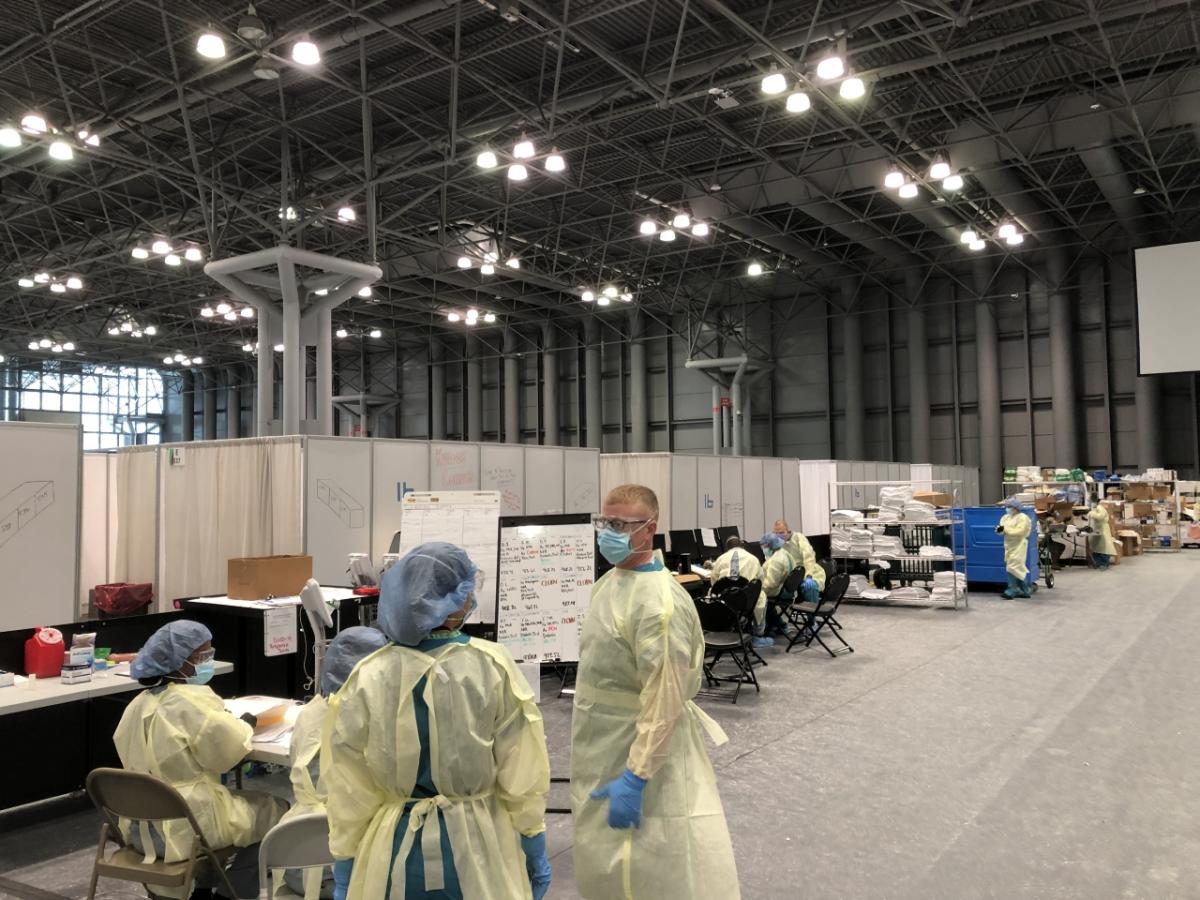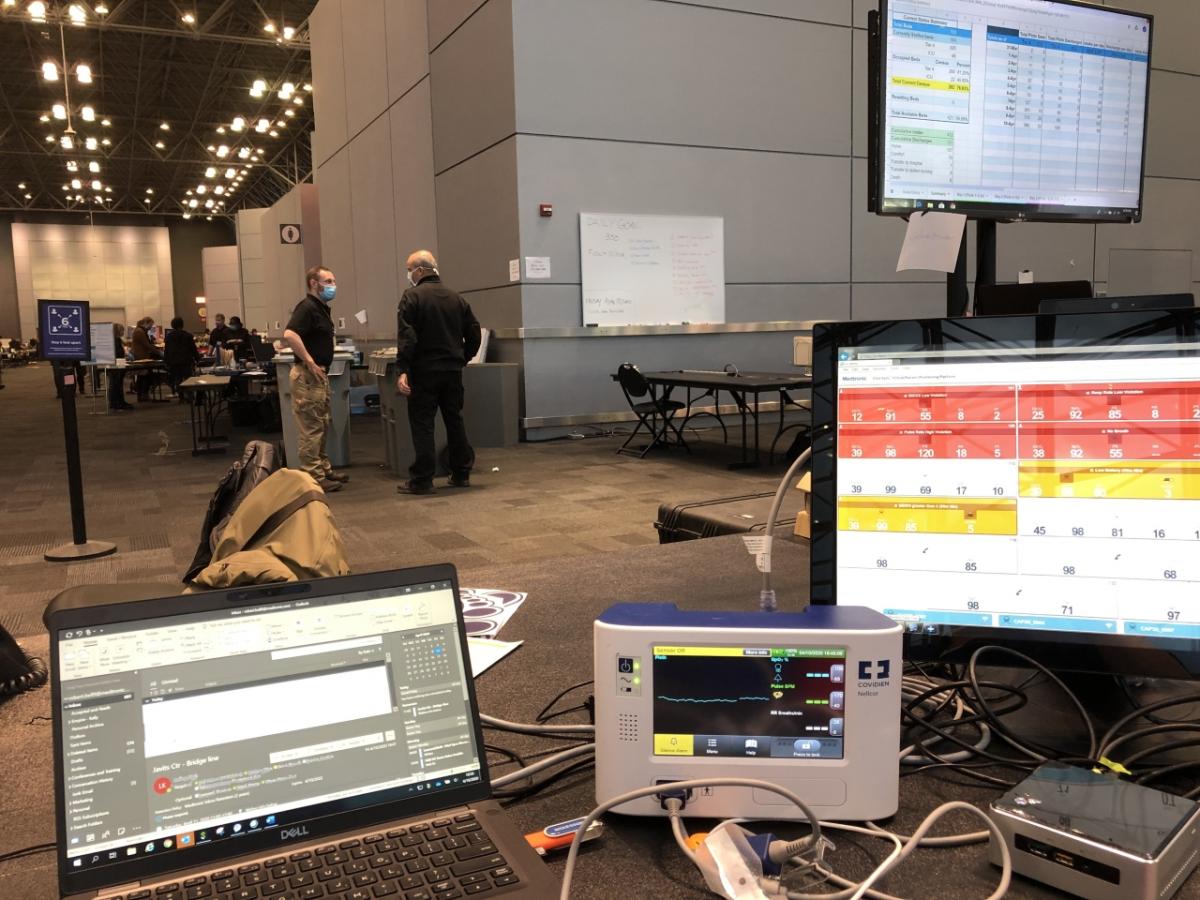Medtronic: Quality Care, From Anywhere
With a global pandemic still raging in parts of the world, Medtronic is helping stretched-thin clinicians work quickly, safely, and efficiently with the help of remote technology.
Medtronic: Quality Care, From Anywhere
When the COVID-19 crisis was hitting its apex in New York earlier this year, doctors needed a way to remotely monitor the vital signs of patients admitted to a large convention center that had been converted into a field hospital.
So, a team from Medtronic quickly installed several of the company’s technologies to create a system that allowed about 10 clinicians to remotely monitor about 400 patients at the Jacob K. Javits Convention Center.
Getting such an operation up and running normally takes weeks or months … Medtronic did it over a weekend.
“Even as we were halfway through setting up the Javits Center, Governor (Andrew) Cuomo’s office told us that our technologies had already saved two lives,” said Frank Chan, Vice President and General Manager of Patient Monitoring at Medtronic. “There’s nothing more gratifying than news like that.”
Remote technology — which can help healthcare workers both monitor patients and operate critically needed medical devices — is proving to be vital during the global pandemic. Not only does it help protect patients and providers by minimizing exposure to the virus, it also allows short-staffed hospitals to operate more efficiently, saving time and valuable resources like personal protective equipment.
REMOTE-CONTROLLED CARE
For almost two decades, remote solutions have been a vital part of the Medtronic portfolio. In 2002, the company released the world’s first remote cardiac monitoring system. Since then, that technology has evolved and become more user-friendly through the synchronization of devices like tablets and cell phones. Today, remote tech works in conjunction with several Medtronic insulin pumps, pacemakers, and other implantable devices.
Now, the coronavirus pandemic is driving the evolution of remote technology even further.
Medtronic accelerated the development of the remote capabilities of our most advanced ventilator. Through a no-cost software update, clinicians can now monitor and adjust ventilator settings from outside a patient’s room.
“The remote-control feature allows caregivers to spend less time at the bedside of infectious patients,” said Ariel MacTavish, Vice President and General Manager of Respiratory Interventions at Medtronic. “Instead, they can stay just outside the room and make changes as needed while observing the patient through the glass. This is safer for the caregiver and offers a more efficient way to work.”
Today, clinicians are remotely operating about 400 ventilators at more than 28 hospitals in the United States.
GETTING A PULSE ON REMOTE MONITORING
COVID-19 patients should have their blood pressure, temperature, and respiratory status routinely checked to help doctors track the progression of the disease.
Monitoring pulse oximetry, or the saturation of oxygen in blood, is especially critical. The disease infects patients' lungs, leading to inflammation, which prevents oxygen from getting into the bloodstream. It's not uncommon for COVID-19 patients' oxygen levels to drop suddenly to dire effect. Continuous monitoring helps clinicians track changes and know when to intervene.
At the Javits Center, clinicians monitored patients’ oxygen levels via a small sensor affixed to their finger that transmitted data to a Medtronic bedside monitor. That real-time data was then sent to a nurses’ station and a separate command room via our virtual patient monitoring platform, which also relayed information about patients’ respiratory function. So rather than individual nurses doing round after round, hoping to be near a bedside to hear an alarm go off, the system enabled 10 clinicians to monitor 400 people.
As a result of successful deployment of remote monitoring at the Javits Center and hospitals in the United States, Medtronic is partnering with hospitals and health ministries around the world to provide this solution more broadly.
“Just like many of us could not imagine living life without an iPad™, remote monitoring will become a ubiquitous part of how medicine is practiced and how care is delivered to patients around the world,” Chan said. “The end of the pandemic won’t spell the end of remote monitoring.”




